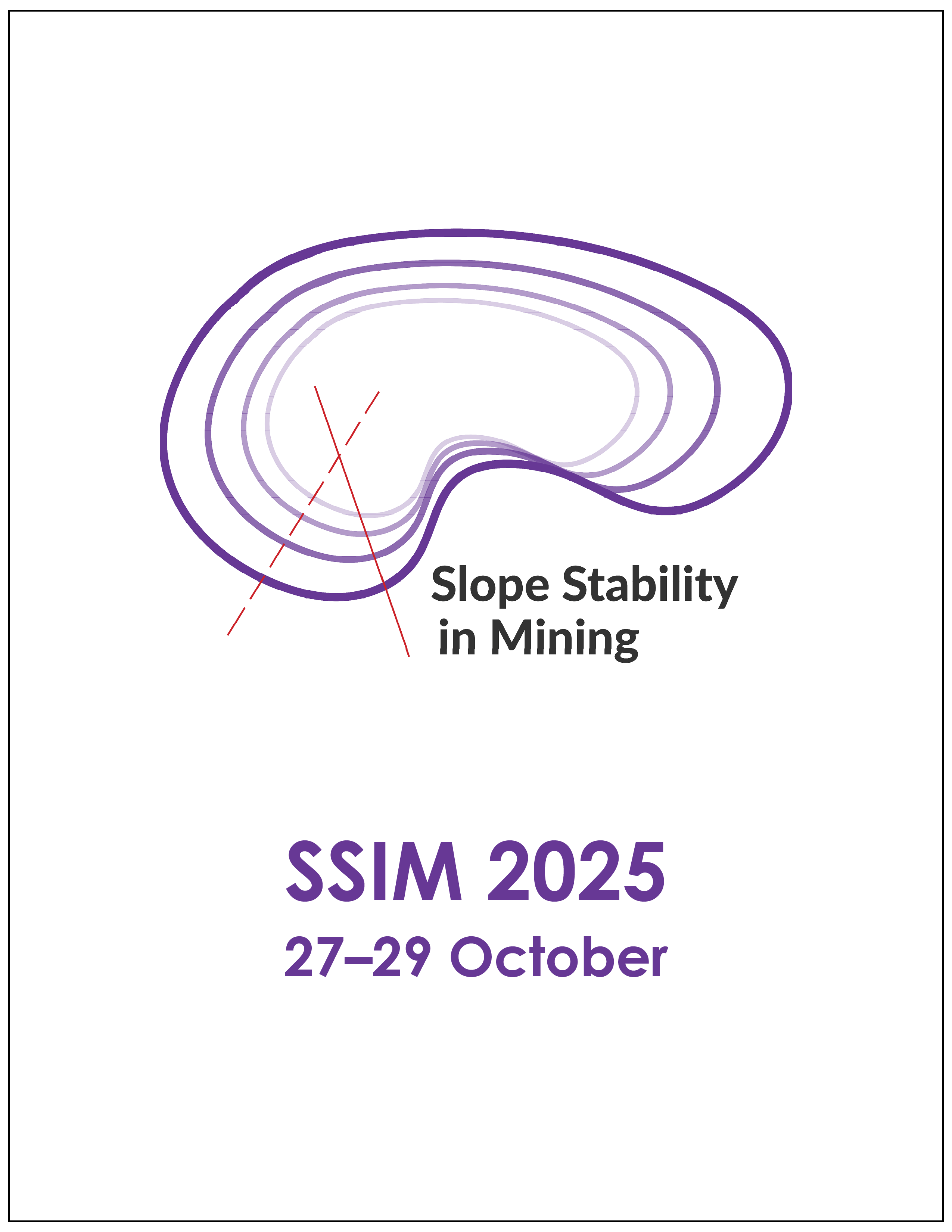Bench design optimisation in a sparsely structured rock mass

|
Authors: Byrne, C; Rogers, S; Stevenson, M; Pothitos, F; Tennant, D |
DOI https://doi.org/10.36487/ACG_repo/2535_06
Cite As:
Byrne, C, Rogers, S, Stevenson, M, Pothitos, F & Tennant, D 2025, 'Bench design optimisation in a sparsely structured rock mass', in JJ Potter & J Wesseloo (eds), SSIM 2025: Fourth International Slope Stability in Mining Conference, Australian Centre for Geomechanics, Perth, https://doi.org/10.36487/ACG_repo/2535_06
Abstract:
The quality of bench faces in the North Wall of Red Chris Mine has greatly improved since their blasting method was amended to include pre-splitting. This improvement in bench stability performance offered an opportunity to optimise bench design. Analysis of the south facing benches shows that stability is in part controlled by a sparse network of longer structures, comprising of both joints and faults. Conventional benchscale kinematics is not suited to considering sparse networks such as this, where in reality the probability of occurrence (POBO) of problematic wedges is typically low, while conventional combinatorially modelled wedges (e.g. SWedge) result in a POBO that is unrealistically high. This results in unnecessarily conservative design recommendations. In contrast, the generation of a discrete fracture network (DFN) model provides a more realistic definition of the structural model based upon stochastic inputs from identified structural sets. Estimates of structure size and intensity were made from local bench mapping and photogrammetry. DFN model analysis, with its realistic structural description, allows the more reliable identification of potential wedges, the classification of unstable wedges, and the estimation of back-break. The combination of POBO and probability of sliding (POS) for modelled wedges, resulted in an overall probability of failure (POF) well within the design acceptance criteria (DAC) and simulated back-break values that were consistent with field observations. Under the right conditions, DFN wedge analysis can justify steeper bench face angles (BFAs) when compared to conventional kinematic analysis.
Keywords: discrete fracture network, optimisation, stability, structural
References:
Barton, CC 1995, ‘Fractal analysis of the scaling and spatial clustering of fractures in rock’, in C Barton & P La Pointe (eds), Fractals in the Earth Sciences, Springer, Boston, pp. 141–177,
Bonnet, E, Bour, O, Odling, NE, Davy, P, Main, I, Cowie, P & Berkowitz, B 2001, ‘Scaling of fracture systems in geological media’, Reviews of Geophysics, vol. 39, no. 3, pp. 349–383.
Dershowitz, WS & Herda, HH. 1992, ‘Interpretation of fracture spacing and intensity’, in JR Tillerson & WR Wawersik (eds), Proceedings of the 33rd US Rock Mechanics Symposium, A.A. Balkema, Rotterdam.
projects/red-chris-copper-gold-mine-british-columbia/
Rees, C, Riedell, K, Proffett, J, Macpherson, J & Robertson, S 2015, ‘The Red Chris porphyry copper-gold deposit, Northern British Columbia, Canada: igneous phases, alteration, and controls of mineralization’, Economic Geology, vol. 110, no. 4,
RocScience 2023, SWedge, version 2023, computer software, RocScience , Toronto, https://www.rocscience.com/software/swedge
Rogers, S, Elmo, D, Webb, G & Guajardo, C 2016, ‘DFN modelling of major structural instabilities in a large open pit for end-of-life planning purpose’, in Proceedings of the 50th US Rock Mechanics Symposium, American Rock Mechanics Association, Alexandria.
Valerio, M, Rogers, S, Lawrence, KP, Byrne, C, Veltin, K, Darakijan, T, Gaida, M, Cambio, D & Chapin, GK 2021, ‘Improving bench design through discrete fracture network analysis’, in PM Dight (ed.), SSIM 2021: Second International Slope Stability in Mining, Australian Centre for Geomechanics, Perth, pp. 457–472,
WSP 2023, FracMan®, version 8.1, computer software, FracMan® Technology Group, https://www.wsp.com/en-us/services/fracman/
© Copyright 2025, Australian Centre for Geomechanics (ACG), The University of Western Australia. All rights reserved.
View copyright/legal information
Please direct any queries or error reports to repository-acg@uwa.edu.au
View copyright/legal information
Please direct any queries or error reports to repository-acg@uwa.edu.au

